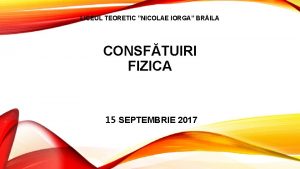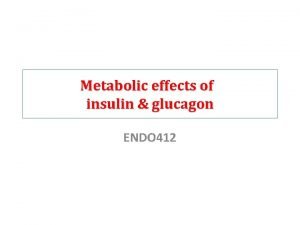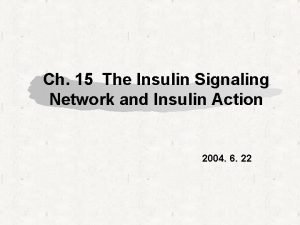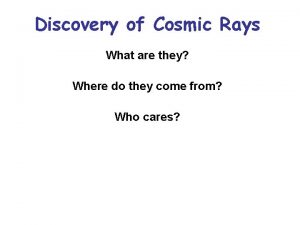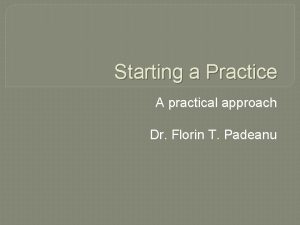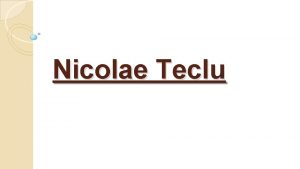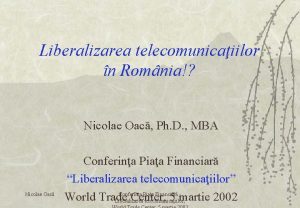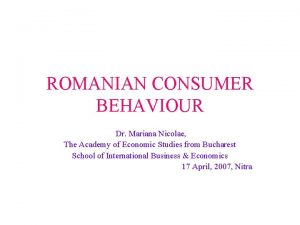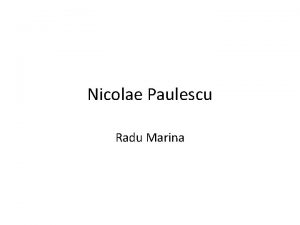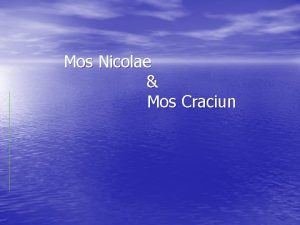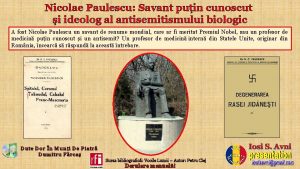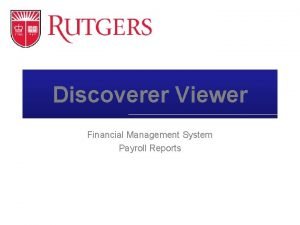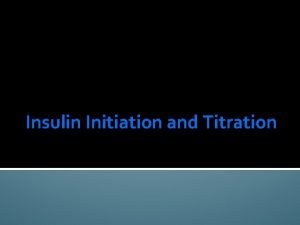Nicolae Paulescu The true discoverer of insulin NATIONAL










- Slides: 10

Nicolae Paulescu The true discoverer of insulin NATIONAL HERO COMPETITION

Nicolae Constantin Paulescu was a Romanian physiologist, professor of medicine, and politician, the discoverer of pancreine (later called insulin). The "pancreine" was an extract of bovine pancreas in salted water, after which some impurites were removed with hydrochloric acid and sodium hydroxide.

Born in Bucharest, he was the first of four children of father Costache Paulescu and mother Maria Paulescu. He displayed remarkable abilities as early as his first school years. He learned French, Latin and Ancient Greek at an early age, so that a few years later he became fluent in all these languages and was able to read classical works of Latin and Greek literature in the original. He also had a particular gift for drawing and music and special inclinations towards natural sciences, such as physics and chemistry. He graduated from the Mihai Viteazul High School in Bucharest, in 1888.

In the autumn of 1888, Paulescu left for Paris, where he enrolled in medical school. In 1897 he graduated with a Doctor of Medicine degree, and was immediately appointed as assistant surgeon at the Notre-Dame du Perpétuel-Secours Hospital. In 1900, Paulescu returned to Romania, where he remained until his death (1931) as Head of the Physiology Department of the University of Bucharest Medical School, as well as a Professor of Clinical Medicine at the St. Vincent de Paul Hospital in Bucharest.

In 1916, he succeeded in developing an aqueous pancreatic extract which, when injected into a diabetic dog, proved to have a normalizing effect on blood sugar levels. Shortly after completing the experiments, he was called to service in the Romanian army. After World War I, he resumed his research. From 24 April to 23 June 1921, Paulescu published four papers at the Romanian Section of the Society of Biology in Paris: The effect of the pancreatic extract injected into a diabetic animal by way of the blood. The influence of the time elapsed from the intravenous pancreatic injection into a diabetic animal. The effect of the pancreatic extract injected into a normal animal by way of the blood.

An extensive paper on this subject – Research on the Role of the Pancreas in Food Assimilation – was submitted by Paulescu on 22 June to the Archives Internationales de Physiologie in Liège, Belgium, and was published in the August 1921 issue of this journal. Furthermore, Paulescu secured the patent rights for his method of manufacturing pancreine on 10 April 1922 (patent no. 6254) from the Romanian Ministry of Industry and Trade.

Doctor Frederick Grant Banting and biochemist John James Richard Macleod, two Canadian scientists

In February 1922, doctor Frederick Grant Banting and biochemist John James Rickard Macleod from the University of Toronto, Canada, published their paper on the successful use of a different, alcohol based pancreatic extract for normalizing blood sugar (glucose) levels (glycemia) in a human patient, a young boy. While Paulescu had patented his technique in Romania, no clinical use resulted from his work, as his saline extract could not be used on humans. The work published by Banting, Best, Collip and Mc. Leod represented the injection of purified insulin extract, after into a diabetic individual ameliorating symptoms of the disease. Not surprisingly, Banting and Macleod received the 1923 Nobel Prize in Physiology or Medicine for the discovery of insulin treatment.

RECOGNITION AFTER 50 YEARS We have Professor Ian Murray to thank for the international recognition of Paulescu’s work. This followed in 1971, almost 50 years after Paulescu’s discovery of insulin. “Insufficient recognition has been given to Paulescu, the distinguished Romanian scientist, who at the time when the Toronto team were commencing their research had already succeeded in extracting the antidiabetic hormone of the pancreas and proving its efficacy in reducing the hyperglycemia in diabetic dogs. ”

Little credits are given today to the true discoverer of the insulin, but at least we, Romanians, should give him the merits he definitely deserves even though history can sometimes be unfair.

